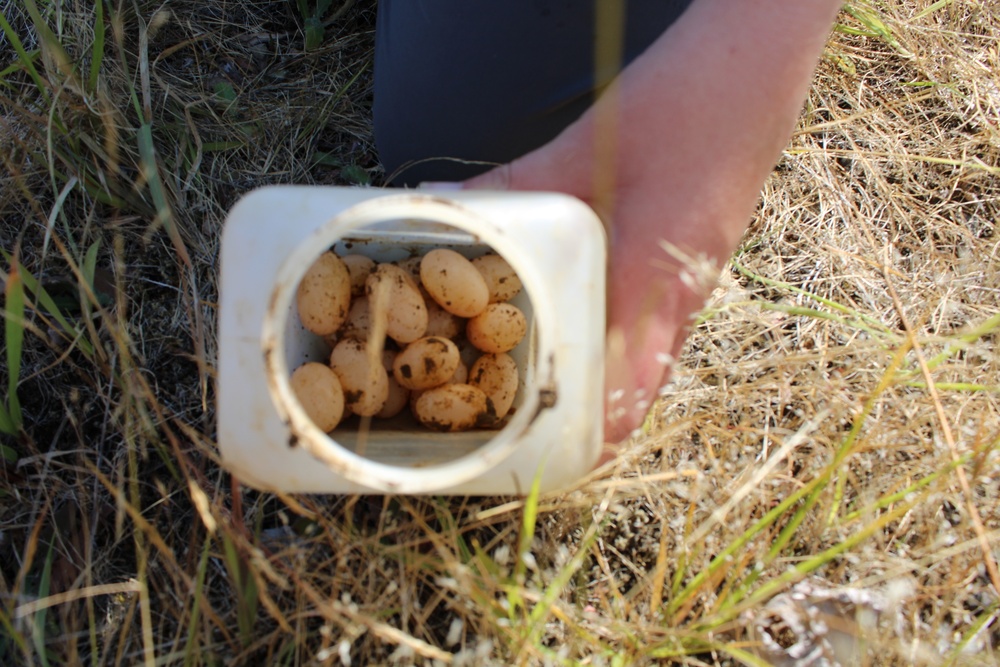
Wildlife biologist Ale Larranaga displays the turtle eggs she removed from a nest near Fern Ridge Reservoir on July 26, 2022. As a federal agency, the Portland District provides certain protections to wildlife at Corps’ reservoirs, and the search for turtles and turtle nests is part of an effort to protect a native species, the northwestern pond turtle, which is experiencing rapid population decline. During turtle nesting season, a team of wildlife biologists from the Portland District, U.S. Army Corps of Engineers, walk the grounds around West Kirk Park, looking for native northwestern pond turtles and red-eared slider turtles. The red-eared slider turtles are a nonnative species in Oregon, and they compete with native turtles for food and habitat, especially nesting sites. Corps biologists regularly look for and remove the red-eared slider turtle and its eggs from several Willamette Valley Corps locations. According to biologists, the red-eared sliders are the most popular pet turtle in the United States, but because red-eared sliders live for about 30 years, pet owners often tire of them and release them into the wild. As a result, they are considered one of the world’s 100 most invasive species by the International Union for the Conservation of Nature.
| Date Taken: | 07.26.2022 |
| Date Posted: | 08.30.2022 18:08 |
| Photo ID: | 7395086 |
| VIRIN: | 220726-A-ET072-0024 |
| Resolution: | 6000x4000 |
| Size: | 7.77 MB |
| Location: | JUNCTION CITY, OREGON, US |
| Web Views: | 24 |
| Downloads: | 2 |

This work, Wildlife biologists find, remove invasive species at Corps locations [Image 14 of 14], by Kerry Solan, identified by DVIDS, must comply with the restrictions shown on https://www.dvidshub.net/about/copyright.